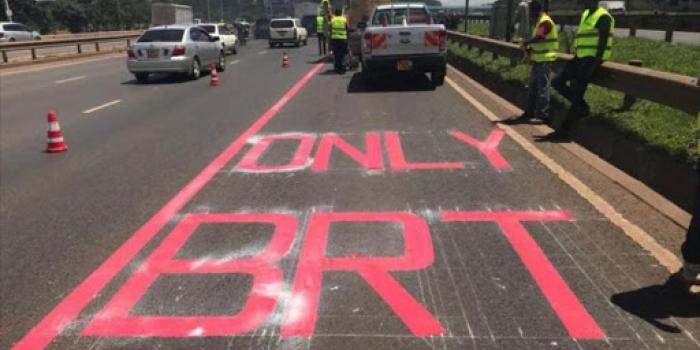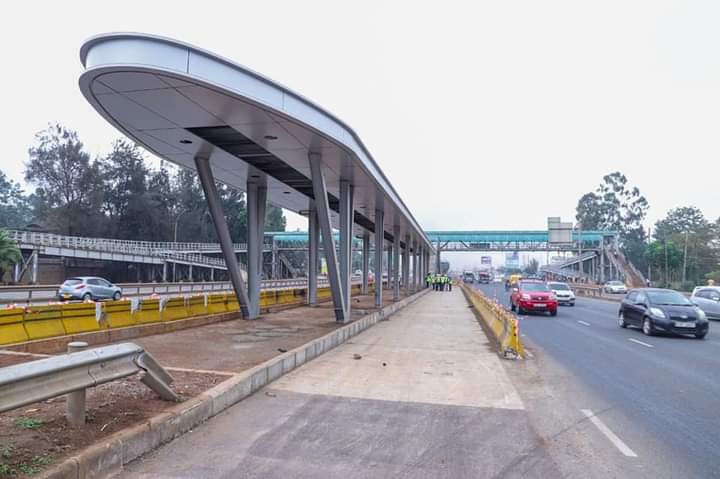BRT systems for Kenyan roads.
Recently Kenya's President William Ruto signed a Ksh8.7 billion ($59.2 million) deal with US foreign aid agency Millenium Challenge Corporation (MCC) for the acquisition of electric buses to ease traffic congestion in the Nairobi Metro Area.


Recently Kenya's President William Ruto signed a Ksh8.7 billion ($59.2 million) deal with US foreign aid agency Millenium Challenge Corporation (MCC) for the acquisition of electric buses to ease traffic congestion in the Nairobi Metro Area. The buses will operate on Line 2 of the Bus Rapid Transit (BRT).
According to the MCC on their website says that the Blended Finance for BRT Project aims to catalyze private financing to support the acquisition of electric buses to operate one or more lines of the BRT system, currently being prepared for the Nairobi metropolitan area.
The aim of this project is to facilitate the timely operation of BRT lines and contribute to Kenya’s goals of reducing greenhouse gas emissions related to urban transportation.
Read: Nairobi BRT System Reserved for Electric Buses.
Ruto echoed that mobility in Nairobi is very important with the city having 5 million people during the day and 4 million at night, so this means there are 1 million people who come every day, posing a very significant challenge to the infrastructure. The bus transport system is a very important component. He also added that the government is also working on a rail system around Nairobi and currently there are 28 stations out of a possible 38.
MCC is a US government body created by Congress in 2004. The corporation on its website says it partners with “the world’s poorest countries that are committed to just and democratic governance, economic freedom and investing in their populations. The Washington DC-based body’s directors’ board in December 2019 selected Kenya as eligible to develop a second threshold program.
The program comprises four projects; the Integrated Transport Planning Project, the First and Last Mile Connections Project, the Detailed Land Use Project, and the Blended Finance for Bus Rapid Transit (BRT) Project.
In late July, Roads and Transport Cabinet Secretary Kipchumba Murkomen said the government was set to resume construction of the stalled BRT project in two months. Murkomen said his ministry was in talks with the Treasury to acquire funds for the completion of the project by December next year.
In August last year, a Chinese company that was building the BRT corridor vacated the site after the government failed to allocate money for the project. Stecol Corporation, formerly SinoHydro Tianjin Engineering Co. Ltd., abandoned the project after the Treasury failed to allocate Sh3 billion that was required to complete the corridor between Kasarani and Kenyatta National Hospital (KNH).
Housing and Urban Development Principal Secretary Charles Hinga had earlier said the project that kicked off in 2020 would open for trials in July 2022. That did not happen due to lack of funds.
In 2020, Stecol Corp. signed a Sh5.6 billion deal with the State for the construction of the pilot phase of the 27km Simba BRT corridor, which runs from Ruiru to KNH. After the pilot phase, Nairobi Metropolitan Area Transport Authority (NAMATA) was expected to implement phase one of the Ruiru-KNH mass transit corridor, in which 300 high-capacity buses would be deployed.
NAMATA would later implement phase two of the project, which would extend the corridor to run from Kenol in Murang’a County to Ongata Rongai in Kajiado County. On final completion, the Simba corridor would be served by 660 buses.
Under the deal, the Chinese company was to establish special lanes for high-capacity buses – each carrying about 160 passengers – from Haile Selassie in the city centre to Clayworks on the Nairobi-Thika highway.
The firm was tasked with converting the two innermost lanes of Thika Road into special lanes for buses – a job that involves remodeling the road to include BRT facilities such as boarding stations and footbridges to ease access to the buses.
A park-and-ride facility was to be built in Kasarani, where motorists heading to the city can park their cars and ride the BRT buses for the rest of the journey.
Five corridors
The ultimate game plan for Namata is to set up five corridors across five counties for use by buses. These include Nyati, Chui, Ndovu, Simba and Kifaru.
i) The Ndovu line will cover Limuru-Kangemi, CBD-Imara Daima-JKIA to Athi River, and Kitengela.
ii) Simba covers Rongai-Bomas-CBD-Ruiru-Thika and Kenol.
iii) The Chui line runs from Tala to Njiru-Dandora-CBD-Showground and Ngong.
iv) Kifaru covers Kayole-Mama Lucy-Donholm-CBD-T/Mall-Bomas-Karen-Dagoreti and Kikuyu. Apart from the Outer Ring Road corridor design from Imara to Balozi Estate.
v) Nyati will be remodeled to cover Kiambu-Balozi and Imara Daima.
Implementation of the Nairobi BRT system, which has been in the works for nearly a decade, was allocated Sh1.17 billion in the 2022/23 fiscal year. A total of Sh1.05 billion would come from the National Treasury, with the remaining amount expected to come from foreign financiers. The State had set aside Sh700 million for the project in the 2021/22 fiscal year.
The larger allocation this year was expected to pave the way for the start of works for several corridors, including the line from Dandora via Juja Road to the city centre, whose construction was scheduled to begin by December 2022.
In May of this year, Members of Parliament declined to approve a new round of funding for the BRT project, terming it a sheer waste of public money. The legislators urged NAMATA officials to present a compelling case that demonstrates the project’s viability before requesting any further funding.
source:
i) Albert Andeso (2023) Stalled Sh5.6bn Thika Road BRT Project Set for Revival




